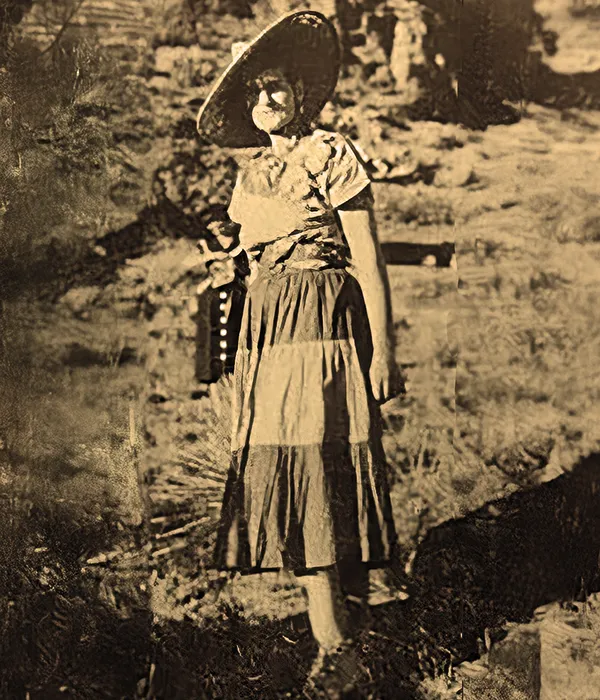

Marguerite Brunswig Staude (1899–1988) was a fascinating figure in the history of Sedona, Arizona, best known for her vision and determination in creating the Chapel of the Holy Cross, an iconic architectural landmark. Born in Louisiana to a wealthy family—her father, Lucien Brunswig, was the founder of the Brunswig Drug Company—she grew up with privilege, traveling extensively in Europe and attending private schools. Her early exposure to art and culture shaped her lifelong passion for creativity and spirituality.
Staude’s most significant contribution to history began in 1932 when, while visiting the newly constructed Empire State Building in New York, she was struck by the illusion of a cross formed by its steel framework. A devout Catholic, sculptor, and philanthropist, she interpreted this as a divine inspiration to build a modern church that would embody her faith through art. Initially, she collaborated with Lloyd Wright (son of Frank Lloyd Wright) to design this church, planning to construct it in Budapest, Hungary, overlooking the Danube River. However, World War II disrupted these plans, forcing her to abandon the project.
Undeterred, Staude shifted her focus to her adopted home of Arizona. In 1941, she and her husband, Tony Staude, purchased the Doodlebug Ranch in Sedona, where she later decided to realize her vision. After her parents’ deaths in the 1940s, she dedicated the chapel as a memorial to them. In 1950, she took her first airplane ride over Sedona to scout a location, settling on a site between two red rock formations. She saw two “signs” confirming her choice: a rock spire resembling a Madonna and child, and a carved symbol she linked to her father’s pharmaceutical background.
Building the chapel was no small feat. The land, part of the Coconino National Forest, required a special-use permit, which Staude secured with help from Senator Barry Goldwater. She worked with architects Richard Hein and August K. Strotz of Anshen & Allen, blending her artistic vision with practical design. Construction began in 1955, supervised by Fred Courkos, and was completed in 1956 after 18 months at a cost of $300,000. The chapel, built into the red rock buttes with a 90-foot cross as its centerpiece, was both a structural marvel and a spiritual statement. Staude intended it as a place of universal appeal, open to all faiths, where people could connect with God through art and nature—a wish reflected in her request that no regular services be held there.
Beyond the chapel, Staude was an active artist in Sedona, sculpting works like the Madonna and the Stations of the Cross for the chapel, and teaching art at the Sedona Art Barn. Her influence extended to the community’s cultural landscape, leaving a legacy that draws millions of visitors annually. The Chapel of the Holy Cross, now on the National Register of Historic Places, earned an American Institute of Architects Honor Award in 1957 and remains a testament to her perseverance, faith, and artistic vision. Staude lived in Sedona until her death in 1988, celebrated for turning a personal epiphany into a global landmark.